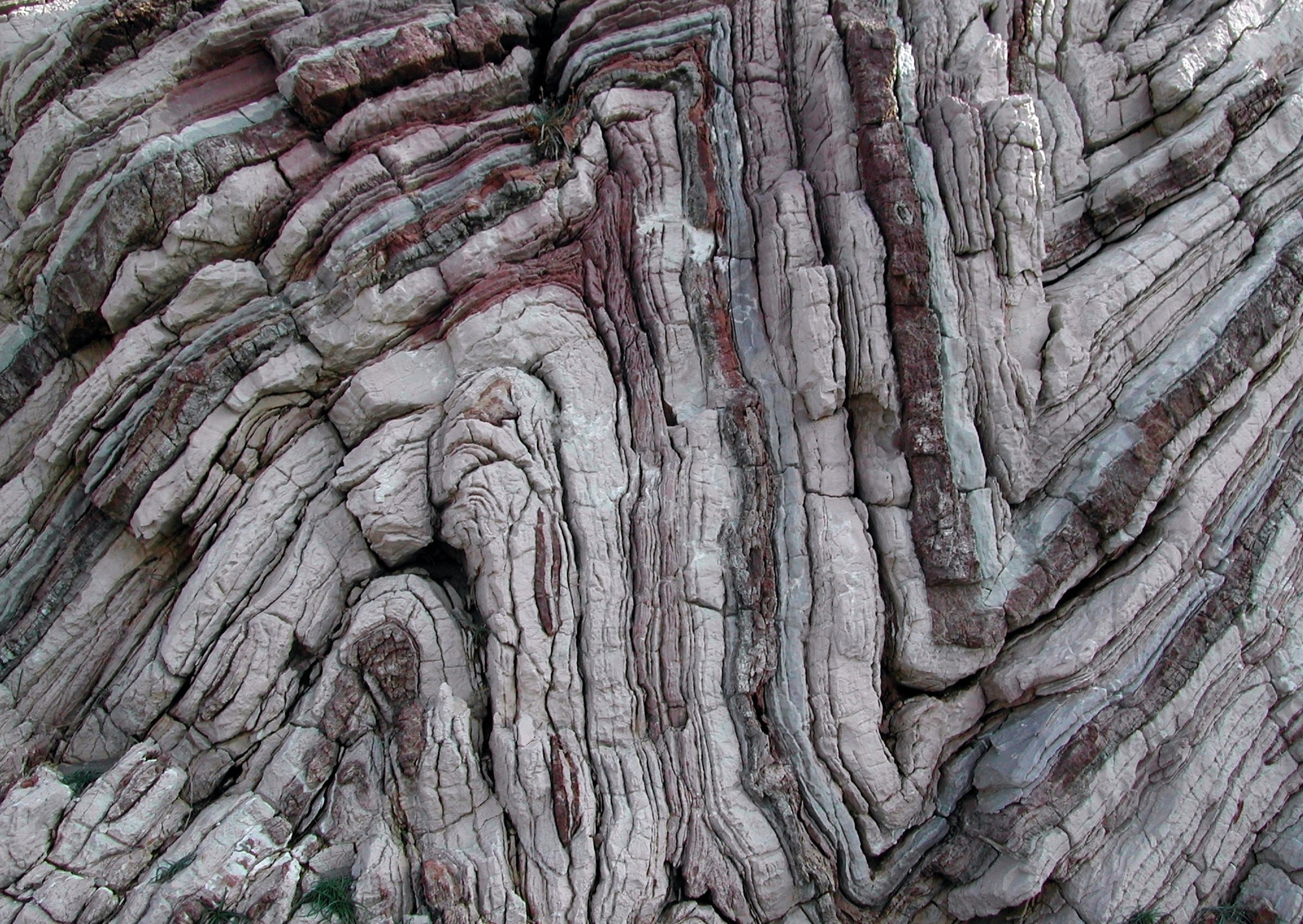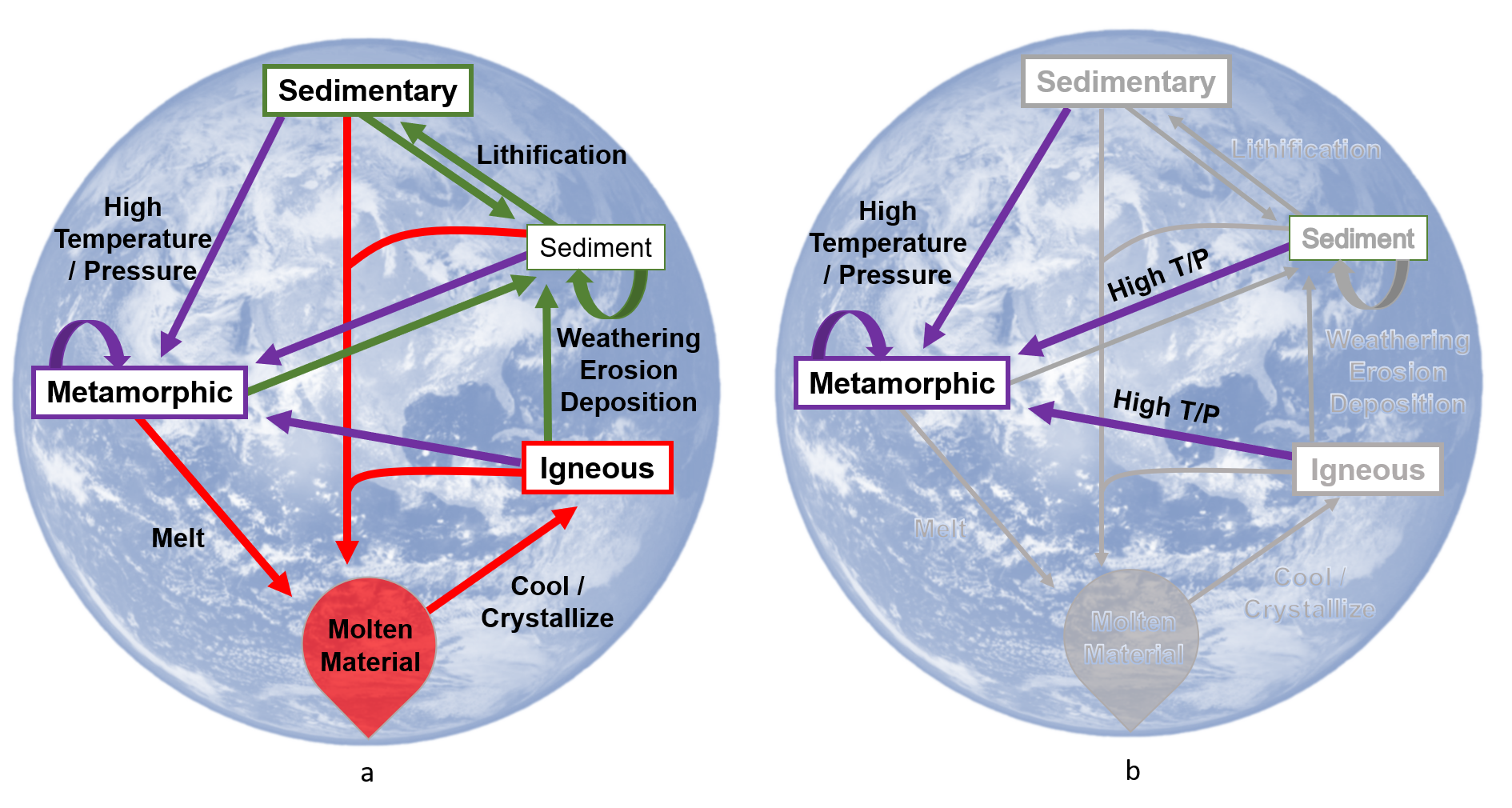Chapter 7 Metamorphism and Metamorphic Rocks

The word “Metamorphic” is Greek: meta means change and morphos means form. When rock units are buried very deeply within Earth’s crust, they are subjected to high temperatures and pressures. These rocks are squeezed and warped like putty in a process called Metamorphism; some of these rocks grow new minerals and textures and others lose minerals. The result of this high temperature and pressure transformation is a Metamorphic Rock.

Metamorphic rocks can involve high temperatures, but unlike igneous rocks, they do not melt into magma. They also involve the transformation of one rock type into another, but unlike sedimentary rocks, they do not reduce the original rock into fragments before reassembling (Figure 7.0.2). Metamorphism is a unique process that takes any type of preexisting rock (even old metamorphic units) and subjects it to heat and pressure over long periods of time until it has changed.
Metamorphism usually happens at least a couple kilometers beneath the Earth’s surface. Tectonic boundaries, in particular, cause different types of metamorphism at mountain-building cores, subduction zones, and spreading centers. The metamorphic rocks that form at elevated temperatures and pressures are categorized by both metamorphic texture and the amount of change that the original rock appears to have undergone: metamorphic grade. And, of course, metamorphic rocks are also categorized by what they were before they changed, called the parent material.
Learning Objectives
After carefully reading this chapter, completing the exercises within it, and answering the questions at the end, you should be able to:
- Summarize the factors that influence the nature of metamorphic rocks and explain why each one is important.
- Describe foliation and explain the mechanisms for its formation in metamorphic rocks.
- Classify metamorphic rocks on the basis of their texture and mineral content, and explain the origins of these differences.
- Describe the various settings in which metamorphic rocks are formed and the links between plate tectonics and metamorphism.
- Summarize the important processes of regional metamorphism, and explain how rocks that were metamorphosed at depths of 10 kilometers or 20 kilometers can now be found on Earth’s surface.
- Describe the important processes of contact metamorphism and metasomatism, and the key role hydrothermal fluids.
***See 7.6 for Text and Media Attributions
The thin, outermost layer of Earth composed of rigid rock, which is home to all known life on the planet.
The alteration of preexisting rock by elevated temperatures or pressures, usually beneath the Earth's surface.
a solid, inorganic, and crystalline substance that has a predictable chemical composition and form by natural processes.
Rocks that form when any type of preexisting rock is warped or transformed under elevated temperatures and pressures.
Rocks that crystallize from molten materials beneath the Earth surface or from volcanic processes.
molten rock that can be found beneath the Earth's surface.
rocks that cement together from weathering products, either from sediments or chemical ions in water.
The process in which the older, denser tectonic plate at a convergent boundary will buckle and sink into the lithosphere. This plate will always be composed of oceanic lithosphere.
A region on the ocean floor where magma from an active divergent boundary is creating new oceanic lithosphere, thus pushing or spreading the older lithosphere outwards.

